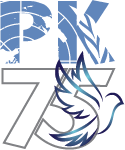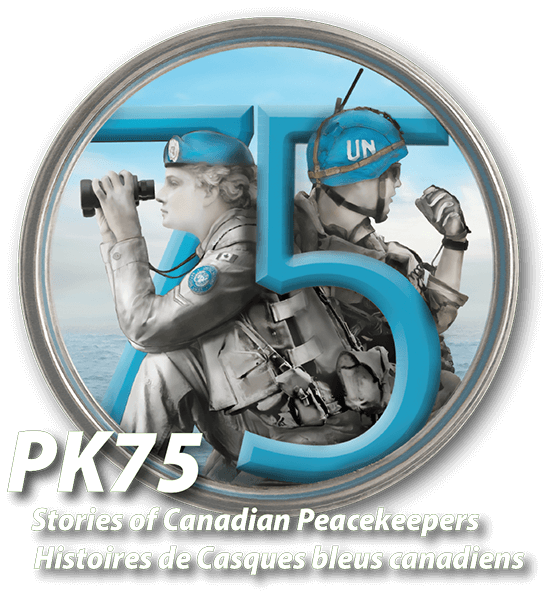

South-Western, ON, Canada
Joe Aitchison
At the time of my first posting to Cyprus in January 1967, the mission was still quite new, and the notion of UN service was very exciting to me. I deployed to United Nations Force in Cyprus (UNFICYP) Headquarters (HQ) with no pre-deployment training or introduction to the country, the mission, the UN or the military and social situations on-island. While I had no pre-conceptions, I was probably less effective initially than I might have been, because I had no conceptions of any kind.
On my arrival in Cyprus, I likely had a greater sympathy for the Turkish Cypriot community than for the Greek Cypriot community. The Turkish Cypriots were subject to restrictions on their access to such things as farming and building supplies and general goods. They were the underdogs, and Canadians love to side with underdogs. Over time, dealing with both communities, I became truly impartial.
Initially, I found the HQ environment chaotic, partly because of its multi-national character and partly because I did not understand the more complex relationships between and among the senior military and UN appointments. Staff procedures were different from those I had been taught in training. It seemed to me that the real work of the HQ was being done by the “professional” officers from the UK and Canada, with some notable exceptions. Accommodation was spartan — a lean-to style building constructed of galvanized sheeting that featured neither heating nor air conditioning. We had a decent Officers’ Mess — run by the British — at which we took our meals and socialized.
The principal staff branch of the HQ was the Operations (Ops) Branch, to which I was assigned as an Ops Centre Duty Officer. We worked a three-day cycle — 24 hours on duty, 24 hours on stand-by and 24 hours off. This, along with access to the Ops Room vehicle gave opportunities to travel the island as a (semi) tourist. I saw a great deal of the island during my tour and learned a good deal about the history and culture of the region.
Our main ongoing concerns were with UN freedom of movement and maintenance of the “status quo”. The former led to constant, wide-spread patrolling both on foot and in vehicles to establish the UN right to go anywhere on the island, and the latter included such mundane activities as counting the number of sand-bags on positions to ensure that the positions had not been improved by either the TCF (Turk-Cypriot Fighters) or (Greek) National Guard. Most restrictions to freedom of movement or changes to the “status quo” were dealt with locally by the lowest-level commander involved, and only relatively major breaches were referred to Force HQ. The most common occurrences were random, or sometimes targeted shots fired, either intentionally or accidently by one or the other belligerent. “SHOTREPS” received a great deal of attention – mainly because they were one indicator that could be captured, reported, counted, plotted, and analysed.
The Canadian unit on-island was assigned to Kyrenia District in the north central part of the island. The other national contingents included Austrian, Irish, Danish, Finnish, Swedish and British units, which were distributed about the island, all of which I visited at some time during my tour.
The only major incident I recall during my tour was a conflict at a small village crossroads called Kophinou. A minor confrontation devolved into Greek Cypriot National Guard armoured cars shooting into the Turkish Cypriot Police Station with their small-calibre cannon, rifles, and machine guns, which conflict led to the Force Reserve being called out and a tactical element of the HQ being deployed. I was with the deployed tactical HQ, which was led by the Chief of Staff . My most salient memory of the event was him telling me to “get up there and make them stop shooting” — a tall order for an unarmed UN staff officer, which I nevertheless carried out.
I was permitted one leave period of 14 days during my tour, but was not permitted to return to Canada on this leave, and chose to spend it in Germany. My leave was extended as my return flight to Cyprus was prevented from landing because of the June War of 1967 (the Six-Day War) and had to be diverted back to Germany. I returned to Canada in July, 1967, having largely missed Canada’s Centennial celebrations, and packed up my small family to move from Rivers, MB to London, ON for my next employment. Little did I anticipate that I would serve two more tours in Cyprus over the next 17 years, but such was the nature of that long-lived mission, which saw thousands of Canadian Forces members “visit” and re-visit Aphrodite’s Isle as “Blue-Beret tourists”.
Biography
Colonel W.J. (Joe) Aitchison was a member of the Royal Canadian Regiment (The RCR) throughout his 38 years of Regular Force service and served as Colonel of The Regiment for four years post-retirement. Commissioned on graduation from the Royal Military College of Canada (RMC) in 1963, he served in all three Regular battalions in appointments from Platoon Commander to Commanding Officer. He is a veteran of three peacekeeping tours, all of them in Cyprus, in 1967 as a member of the United Nations Force in Cyprus (UNFICYP) Force Headquarters Operations “A” staff, in 1973–74 as the 2 RCR Operations Officer in UNFICYP Sector 4 (Nicosia), and in 1983–84 as the Commanding Officer 2 RCR and Commander Sector 4.
In addition to his three tours in Cyprus, Col Aitchison served two tours of NATO duty in Germany and in 11 other locations in Canada. Col Aitchison is a qualified parachutist and parachute instructor and has completed several other military and professional development courses, including the prestigious U.S. Army Special Forces Officer course. In addition to battalion command, Colonel Aitchison commanded the Infantry School and Canadian Forces Base London. His last appointment before his retirement was Chief of Staff of the Canadian Forces Training System.
Colonel Aitchison wears the insignia of the Order of Military Merit in the grade of Officer (OMM), the Order of Saint John of Jerusalem in the grade of Member (MStJ), the Special Service Medal with NATO bar, the Canadian Peacekeeping Service Medal, the United Nations Cyprus Medal with the numeral “3”, the 125 Anniversary of the Confederation of Canada Medal, the Queen Elizabeth II Diamond Jubilee Medal, and the Canadian Forces Decoration (CD) with three clasps, indicating more than 42 years’ service.
Originally from South-Western Ontario, Colonel Aitchison now resides with his wife, Elva, in South-Eastern Ontario, the couple have three children, two of whom are serving members of the Canadian Armed Forces.


